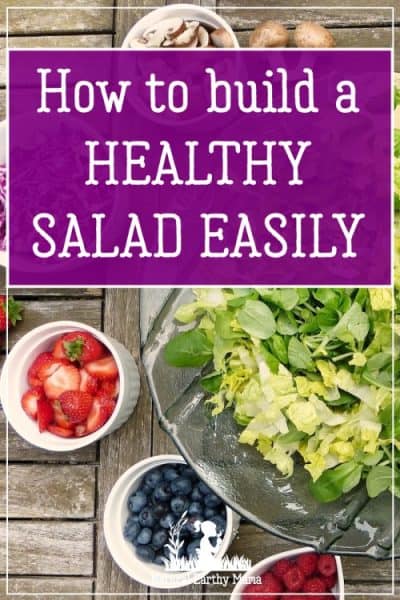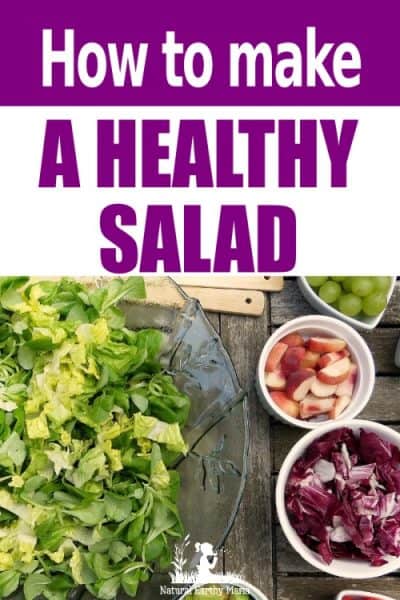 Salads are an absolutely fabulous way to add some very healthy foods into your diet. There are heaps of delicious foods that you can add to your salad to ensure that you feel full and satisfied. These are our tips on how to make a healthy salad.
Salads are an absolutely fabulous way to add some very healthy foods into your diet. There are heaps of delicious foods that you can add to your salad to ensure that you feel full and satisfied. These are our tips on how to make a healthy salad.
We have a 10 day Keto Kickstarter Challenge available here
Please read: This information is provided for educational purposes only and is not intended to treat, diagnose or prevent any disease. We encourage you to make your own health care decisions in partnership with a qualified health care professional.
This post contains affiliate links, this means at no extra cost to you, we make a commission from sales. Please read our Disclosure Statement
How to Make a Healthy Salad
A salad is so much more than lettuce and spinach with a couple of tomatoes and cucumber. When made correctly, a salad can be a meal. It can be filling, delicious, and satisfying.
When building a salad, it is a great idea to think about it in sections. Each section has a key role within the salad to ensure that you are building a well-balanced, filling salad.
We have designed a salad map that has three key sections to guide you. There is a Green, Orange, and Red Section. Each section has a purpose and important to really consider how each part can support your body and your general health.
Green Section
First you start with the Green Section. This is the ‘green for go’ section. This is where you need to add as many leafy greens as you like! Greens are the basis of a great healthy salad.
What greens should I use?
It can be over whelming when you start thinking of all the ‘greens’ you can add to your salads. I recommend using a range of greens and mixing them up each day.
The wider variety of greens you can use throughout a week, the greater range of nutrients you will be adding to your body.
Some greens you may like to use:
Spinach
The darker the green the better, and spinach is defiantly one of those darker leafy greens. Spinach is available in both baby and fully grown.
The baby spinach has a lighter color leaf and has almost no taste. The full grown spinach plant is slightly darker and has a slightly stronger taste. Both are great for salads.
Lettuce
Lettuce comes in a range of types – cos, romaine, iceberg, and more!
Lettuce actually has a lot of water mass and less vitamins and minerals than spinach, however it still contains health promoting properties.
Due to its high water content it is very refreshing on a hot day. Lettuce is a great way to bulk out your salad and to add some crispness to it.
Broccoli
The secret super food that no one really talks about! Broccoli is full of amazing health benefits.
Adding it raw to a salad as a yummy bitter taste. And, if you do not like the taste of raw broccoli, you can steam and cool then add to your salad.
Cabbage
Similar to broccoli, cabbage can be added raw or cooked to a salad. Raw cabbage does have a strong taste; it also has a strong crunch!
Finely chop cabbage to add a fresh crunch to your salad. If you are following a high fat diet such as Keto, consider cooking your cabbage in butter then adding it to the salad.
Chard
Also known as swiss chard or silver beet, this is a very dark green vegetable. As I mentioned above, darker the greens, the more nutrient rich it is. Chard does not disappoint in the nutrient category!
It does have a ‘tough’ leaf and it has an acquired taste. Similar to the cabbage, you can steam prior to adding it to the salad. Another option is to ‘massage’ it with olive oil to soften the leaf before adding it raw.
Kale
Kale is very similar to chard; it is a dark ‘tough’ leafy green.
Kale can be steamed and cooled or chopped straight into the salad. Kale can also be ‘massaged’ with some olive oil to soften prior to cutting.
CHOP CHOP CHOP
When you are adding your leafy greens, it is very important that you chop them. This is important for a couple of reasons.
First of all, when you chop plants, it draws out the good properties within them. This is why the fresher the greens are, the better. This is because as soon as you chop them (or break them from the root system) it begins decreasing in its high quality health properties.
The second reason to chop your greens, is to help with the chewing process.
When we chew, we only get one chance to break down our food. Once the food moves past our mouth and into the throat and stomach, we no longer have any control over how the food is broken down.
Unfortunately, now days we are all in a hurry and want to rush down our meal as quick as we can so that we can move on to the next job.
This means that we are not chewing our food as much as our body needs us to.
So help your body out and chop up your food prior to eating.
Adding Vegetables
Next you will need to add an assortment of vegetables to your salad. If you are following the Keto Diet it is important to look for low carb vegetables. Here are some vegetables you may like to experiment with:
- Tomatoes
- Cucumber
- Yellow and Red Peppers
- Onion – red and brown
- Mushrooms
- Carrots
- Cauliflower
- Asparagus
Once you have added a range of Green Section vegetables, it is now time to move to the orange section. This is where you will add your next level of foods to your salads.
The Orange Section
This is the slow down, but still okay to eat section. In the Green Section you can add as much as you like. In the Orange Section you need to slow down and be a tad more calculated in what you are adding.
This orange section is just as important and the green section, however a balance is best.
Orange section contains 3 areas – fats, dairy, meats.
Fats
What? Adding fat to a salad? Sounds very counter-productive, doesn’t it? But actually this is the best way to feel full for a long time after eating.
Unfortunately, you cannot go ahead and add fries and deep fried options – this is not the fat we are talking about. You will need to add Healthy Fats.
Healthy fats contain amazing nutrients that your body will love you for! Here are some really good sources of natural healthy fats.
Avocado
This is one of the most delicious, natural foods that you can add to your salads. It is packed full of nutrients. If you are following the Keto Diet then this is a food that you will want to be eating daily!
Once opened, avocados do not last long, so keep this in mind (or just use the whole avocado!)
Nuts
Nuts add a crunch and a sense of substance to your salad. Nuts have a range of health benefits and these range from nut to nut.
To soak or not to soak?
When you soak your nuts over night, they break down so that your gut can more easily pull the nutrients out of them. It is best to soak your nuts if you would like the full nutrient punch from them.
Our top picks are walnuts, hazelnuts, macadamia, brazil nuts. Cashew and peanuts have their place too. Remember to be aware that many people have nut allergies, so this may not be the best option for you and your family.
Seeds
There are some really amazing seeds that you can add to your salad to really lift the flavor. Some seeds such as flax seeds need broken down into powder form just prior to consuming it. This powder is very powerful in a salad as it clings to your wet green leaves and coats them with a burst of flavor.
Our top picks for seeds are flax seeds, chia seeds, sesame seeds, pumpkin seeks, sunflower seeds
Fish
You are probably already aware of the amazing health benefits of fish.
If you have access to fresh, clean fish you should really utilize this resource. Fish comes in brown and white flesh meat and both have really good healthy properties. Of course, they are also a great source of fats.
Humans have been eating fish for thousands of years, so surely our ancestors got it right!
Eggs
Super versatile and super healthy. Eggs have so many healthy benefits and can also be prepared in a range of ways.
You can add boiled, poached, and scrambled eggs to your salads. Eggs help you feel full also.
Dairy
For some people, dairy can be your best friend, for some people it is their worst enemy.
There are more and more people who are discovering they digest dairy without issues. Therefore, if you are consuming dairy, listen to your body and what it is telling you.
Cheese:
There are some really delicious cheeses that can add such depth to your salads. You can get anything from smoked cheese, aged cheese, and soft cheese.
Explore these different options and how you can use them to bring out different fruit and vegetables tastes in your salads.
Our picks: Camembert, grated cheddar, feta, aged English cheddar, double cream brie
Other Dairy Options:
There are some other dairy type foods you might like to explore. These options add great flavor and fullness to your salads. Play around with a range of different options.
Our picks: cottage cheese, sour cream, ricotta
Meat
Meat is absolutely a great option to add to salads if you are open to eating meat. Meat can add great flavor and protein to your salads. It is all about balance.
If you already have a lot of protein within your choices in Green and other Orange section foods, you may not need to add meat. It is all about the balance.
Red meat
Red meats such as beef and lamb can add some great nutrients to your salad. You can cook your red meat in a range of ways to add a range of different flavors so you don’t feel like you are eating the same cuts of meat each day.
Try barbecuing, tossing in olive oil then pan frying, or roasting. The best benefit of red meat is the iron content. If you are lacking in iron, add red meat to your daily salad.
White meat
Above we have already mentioned the benefits of fish. There is also chicken and pork as meat options to add to your salads. Similar to the red meat above, you can cook this meat in a range of ways to add variety to your salads.
Fry, barbecue, or roast the meat. Chicken in particular can add protein to your salad if you are needing to add more of this.
The Red Section
The red section, similar to the traffic light, means stop and think. Before adding anything beyond the green and orange sections have a look at your salad and critically think about what you need to add.
Sometimes I really enjoy having a salad with no items from the Red Section, sometimes I may choose 2-3 options. It really depends on what your body is telling you. The more in tune with your body, the better.
Dressings:
This is a really big area that people ‘fail’ in their salads. A dressing can really take away the nutritional value of a salad or add a huge amount of sugar.
Marketers really would like you to buy their dressing, whether it is good for you or not. Please read your labels carefully. Better yet, make your own dressings so that you know there is no chemicals and man-made foods within your dressing.
Another thing to be mindful of is balsamic vinegar. People assume this is healthy, and yes for some people it is a great addition to their diet. For others e.g. the Keto Diet, the balsamic vinegar has too much sugars in it to be consuming.
Do your homework and know exactly what is inside your dressing.
Coconut Oil
My goodness, coconut oil has so many health benefits – it is out of this world! There are two ways to use coconut oil on your salads.
You can melt it so that it is in liquid form, and drizzle it over your salad. This will add a lovely coconut fresh flavor to the salad.
Another option is to add liquid coconut oil to a plastic sealed bag. Lay this flat on a plate with the oil inside it. Place the oil in the bag on the plate and put this in the freezer.
This will create a thin hard layer. This can be smashed up into ‘shards’ and added as a topping to your salad. This adds a lovely crunch of flavor to your salad.
Olive Oil
If you do not feel like you have enough healthy fats in your salad you may consider using olive oil. Olive oil is packed full of omega-3 fatty acids and very healthy for you.
You will want to ensure you don’t use too much as it can make your salads too oily. Balance is the key.
High Carb Vegetables
There is certainly a place for high carb vegetables in your salad if you are open to carbs in your diet. This is not the case if you are following the Keto Diet. Most root vegetables have high carbs content.
Roasting these root vegetables and adding them to your salad can be a really good option if you are extremely hungry or know you are going to have a physically busy day.
Roasted vegetables ensures you have some good fats alongside the carbs to slow down the raise in blood sugars you may have when eating high carb foods.
Fruits
Some people love to add fruits to their salads. If this is the case, please be mindful that fruits will add a huge range of nutrients and vitamins (which is fantastic!) and they will also add sugars (not so fantastic!). Fruit can certainly have a place in salads, just not recommended to do this daily.
Our top picks: grapes, strawberries, watermelon, apple
Pesto
Pesto is made from high density of herbs with some nuts and cheese added. Because of the high amount of herbs within the pesto, it can add a huge flavor boost without needing a huge amount of pesto.
Making your own pesto is a fantastic idea, because you can ensure the quality of the herbs within it.
Putting it all together
As you get into the method of building your salad from the Green, Orange, and Red sections it will become a much more natural process. You will come to a point where you don’t have to manually think about each step – you will know what work bests for you.
You will learn about what works well for your body. You will discover what foods you need to add more or less of to really build a satisfying salad.
Take risks, enjoy discovering flavor combos that work really well together. We would love to hear about your salad creations – email us and let us know what flavors you have discovered!
Grab our free printable meal planning sheet here:

